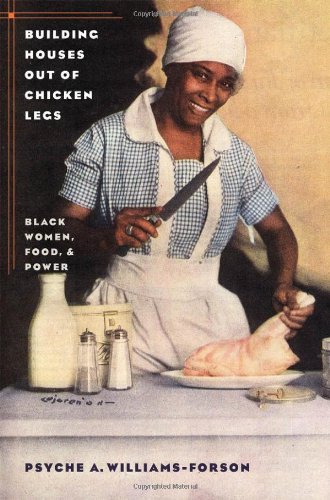
Building Houses out of Chicken Legs
Black Women, Food, and Power
- اطلاعات
- نقد و بررسی
- دیدگاه کاربران
نقد و بررسی

April 3, 2006
The humble chicken has possessed complicated associations for African-Americans from earliest slavery times, especially for women, who traditionally had to cook the bird for white kitchens. Moreover, hawking chicken by "waiter carriers" became a key source of income for poor disenfranchised blacks, while stealing chickens reflected a kinship with African-American "trickster heroism," according to Williams-Forson, an American studies professor at the University of Maryland. In her valuable though dense and scholarly study, Williams-Forson explores how the power of food images advanced the rhetoric of black stereotypes in lore and literature, for example, as portrayed in "coon" songs like Paul Laurence Dunbar's popular "Who Dat Say Chicken in Dis Crowd" and characterizations of mammies in advertisements in upscale magazines. With the Great Migration, blacks took their cultural practices with them, literally, in shoe boxes containing fried chicken, and their route became known as the "chicken bone express." The author discusses chicken as "the gospel bird" in African-American churches (the strength of one's cooking skills elevated one's status with the preacher), and how eating chicken (or eschewing it) provides a way for blacks to "signify" class and status. Following her hard-going study is a staggeringly thorough bibliography.

June 1, 2006
Despite stereotypes of black people as chicken lovers to the point of thievery, Williams--Forson offers a fresh perspective, one that features chickens at the center of acts of affection and self-identity as well as efforts at advancement. As the preparers of the chicken for families, church dinners, activist meals, and commercial enterprises of all sizes, black women have managed to express and self-identify through food beyond nourishment. Acknowledging that women's cooking is often marginalized in the greater society, Williams-Forson explores the complexities of food, gender, and race. Along with fascinating interviews with black women, Williams-Forson relies on travel narratives, film, art, literature, and historic documents and ephemera, including racist depictions in advertisements. She recalls chicken dinners prepared to feed families on long trips when they could not stop to eat in restaurants, dinners sold to support families and communities, and communities that developed among black women in the kitchen. Beyond the place of chicken as racial stereotype and in soul-food gatherings, Williams-Forson offers intriguing interpretations of black history, culture, and feminism.(Reprinted with permission of Booklist, copyright 2006, American Library Association.)




دیدگاه کاربران